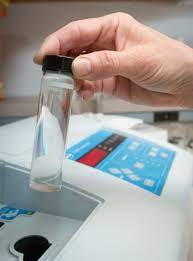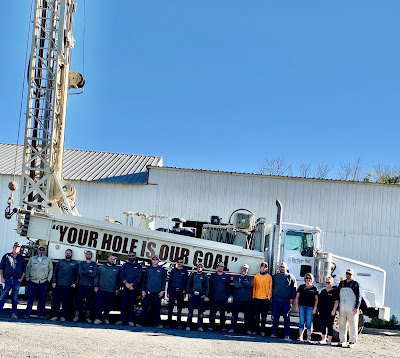How long does a well last?
A well typically will provide a reliable source of water for 30+ years as long as it is drilled using quality products, there are no significant water quality issues and it is originally drilled to a suitable depth.
Quality products in well construction start with your drilling company and their practices and procedures. In residential wells plastic or PVC casing is typically installed to line the well. For residential applications this casing comes in sizes between 4” - 5” ID (Inside Diameter), has two options for thickness SDR 17 the thicker option and SDR 21, a thinner grade of PVC and has the option of manufactured slots. Any quality driller knows that they should steer a client away from 4” PVC SDR 21 casing and from driller installed slots. The reason to stay away from 4” casing has to do with residential pump sizing. A typical residential pump runs 3 ⅞”. If you are looking a little puzzled right now and rereading the numbers we have discussed here you got it right, that leaves a ⅛” margin of error and a 1/16” space between the wall of the casing the outside of the submersible pump. This can cause overheating issues and leads to shortened life capacity on pump systems. Now onto the thickness of the casing. As with any PVC pipe that you put in the ground the thicker the wall the less likelihood you have of catastrophic failure from ground shifting, root intrusion, etc. Unfortunately we have seen fellow drillers shatter SDR 21 casing just setting into a well upon initial installation and more often than not they don’t tell the homeowner and these types of issues aren’t discovered until many years later and there is no fixing them. Lastly, manufactured slot casing vs. driller installed casing. By now you can probably guess which way we lean but if not here goes. Manufactured slots are engineered to withstand the weight of the entire line of casing, they are tested and tested over and over again and the casing manufacturer will stand behind their protect in the event of catastrophic failure. And you are probably wondering what is driller installed slots? This is when a driller takes a skill saw or drill bit and self-installs holes in the casing called slots to allow water to penetrate the hole. As you can imagine these are not engineered, tested and supported like they would be if installed by a manufacturer. What will you pick for your well?
So, why then did we mention that quality well construction starts with your drilling companies practices and procedures. Well, improper casing installation is one of the major cause of premature well failures. It’s up to your drilling company to guide you to a solution that is going to provide a long-term source of water and if their practice is to install smaller, thinner casing with self-installed perforations we highly advise against working with that company. Instead ask questions about what size casing is best, what hole size should accompany the size casing you are proposing.
Does hole size matter? It sure does! Just as much as casing size matters in the longevity of the well itself and the pumping equipment, hole size plays just as significant a role. At Heritage Well our common practice is to drill the hole size at minimum 2” larger than the casing to be installed. In hard rock, air- hammer quotes this amount of space is enough to get the casing safely in the hole without damage. In softer formations we typically drill a 7 ⅞” hole when we install 4.5” casing and larger holes and casing in holes that have a higher level of production used for small agriculture and commercial applications. We use a larger diameter hole in soft formations because we want to leave enough space to install a gravel pack to act as a natural screen between the wall of the hole and the casing installation. This acts as a filter pack to keep the sand and clays in these types of formation from infiltrating the screens of the well casing. For larger diameter holes we follow similar guidelines to install a long-lasting quality well for small agricultural and commercial clients.



Comments
Post a Comment